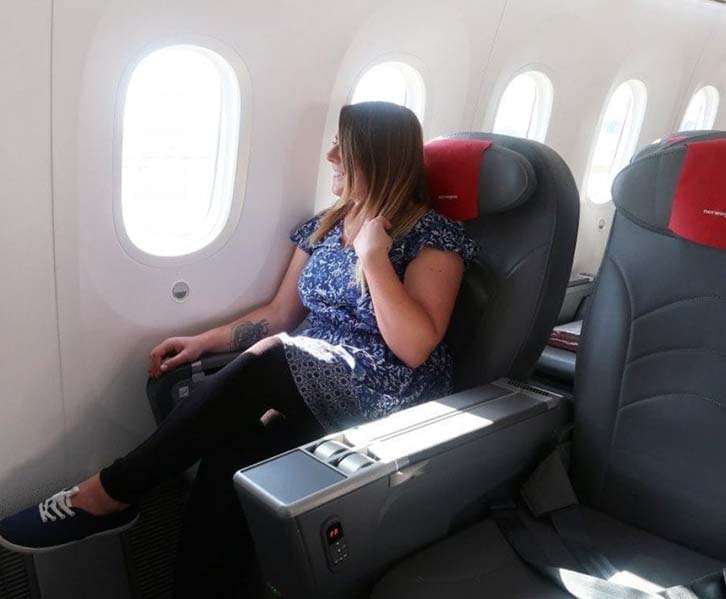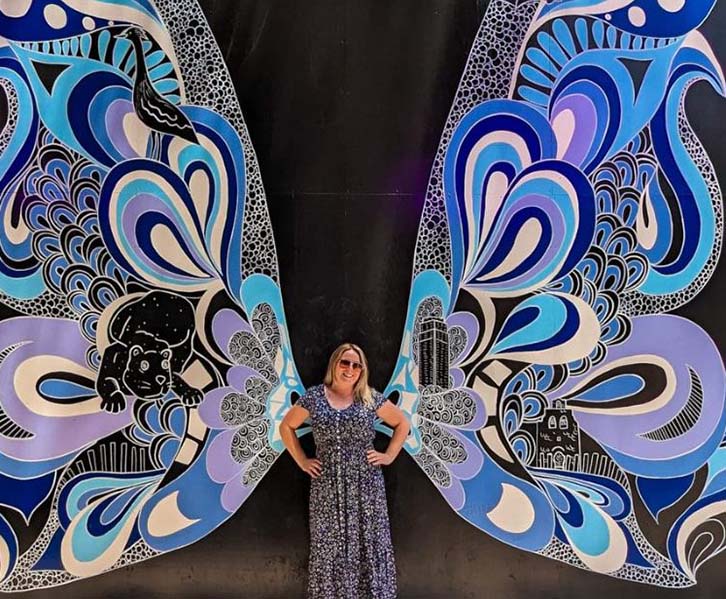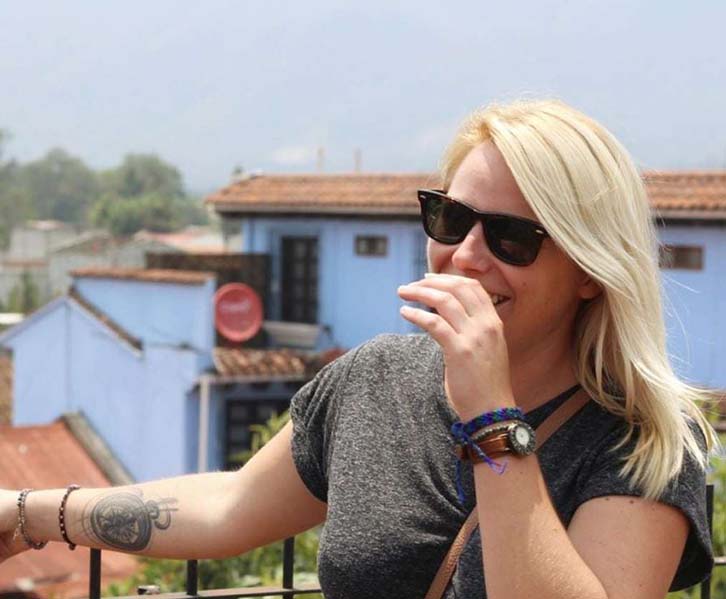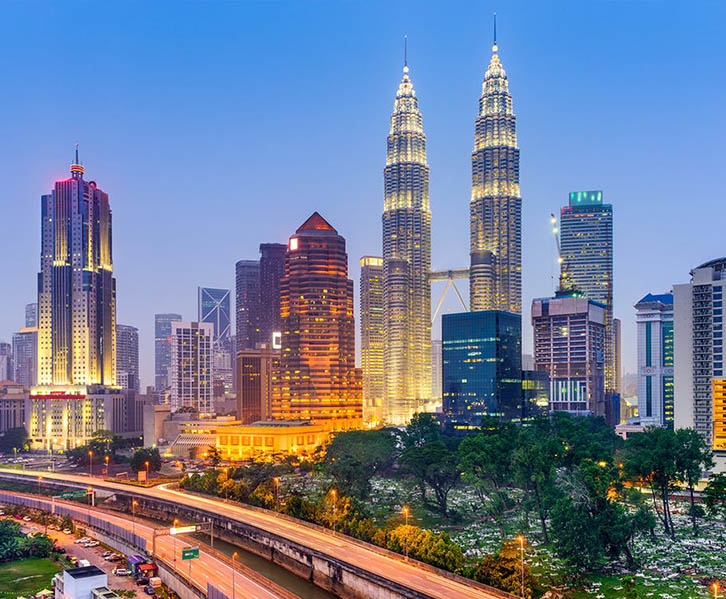Looking for the ultimate 3-day Singapore itinerary? I’ve got you covered! After spending a few days there, I’ve put together a list of the best things to do in Singapore, including top dining spots and coolest bars in the city center. If you have just a few days and want to see as much as possible, this is the perfect choice!
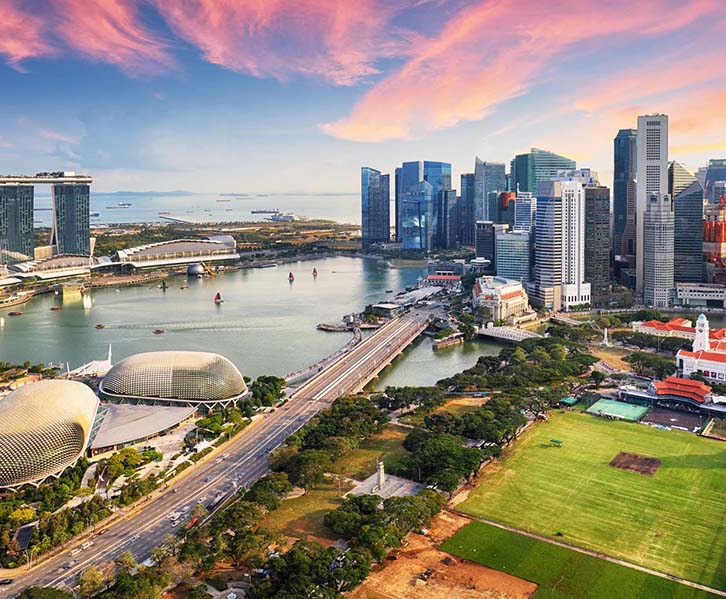
How to get there
We flew with Norwegian Air from London Gatwick Airport to Singapore. It’s their new route operated by brand new Boeing 787 Dreamliner aircraft. It’s one of the most affordable direct flights from the UK to Asia, with round-trip fares as low as £309. If you’re on a budget, this is an ideal choice.
If you want to spend more money to upgrade your travel experience, Norwegian Air also offers a premium cabin. That’s how I traveled, and it’s definitely much more comfortable than the regular economy class. You get over a meter of legroom and spacious, comfortable seats. Additionally, they offer complimentary drinks and premium dining service. You also get the benefit of expedited airport security and lounge access! There are plenty of reasons to upgrade, especially on long-haul journeys like this one!
After arriving in Singapore, exploring the city becomes very easy. There are plenty of Ubers and Grab (ride-sharing apps) available at affordable prices, and the public transportation system, especially the subway, is easy to use. Singapore is also a very walkable city.
Accommodation in Singapore
If you’re looking for a great boutique hotel in Singapore, I can wholeheartedly recommend the Naumi Hotel where I stayed. It’s right across the street from the famous Raffles Hotel, so the location is excellent. The beautifully designed rooms are super spacious and equipped with everything you need for a comfortable stay! Plus, there’s a stunning rooftop pool with magnificent views.
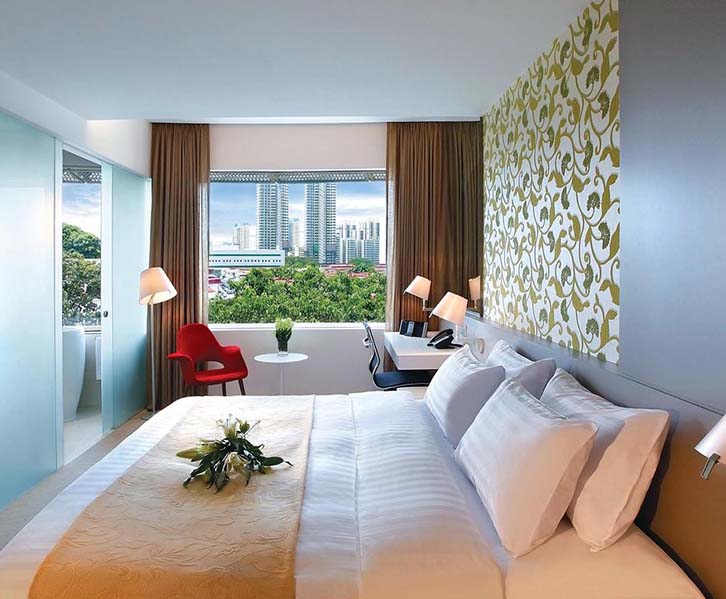
Important Note: Check prices on booking.com or Hotels.com, compare, and find the best deal!
Budget
If you’re on a budget, there are plenty of high-quality hostels to choose from in Singapore.
Luxury
If you really want to indulge, Singapore offers two quite famous hotels that are worth considering. First is the historic Raffles Hotel, opened in 1887 and the birthplace of the Singapore Sling. Second is the iconic Marina Bay Sands Hotel – a three-towered structure that dominates the skyline. Hotel guests can enjoy the stunning infinity pool on the 57th-floor rooftop!
Top Things to Do in Singapore
Start your 3-day journey in Singapore with a visit to some must-see attractions, experiencing the modern culture of the city amidst impressive skyscrapers.
Marina Bay Boat Tour
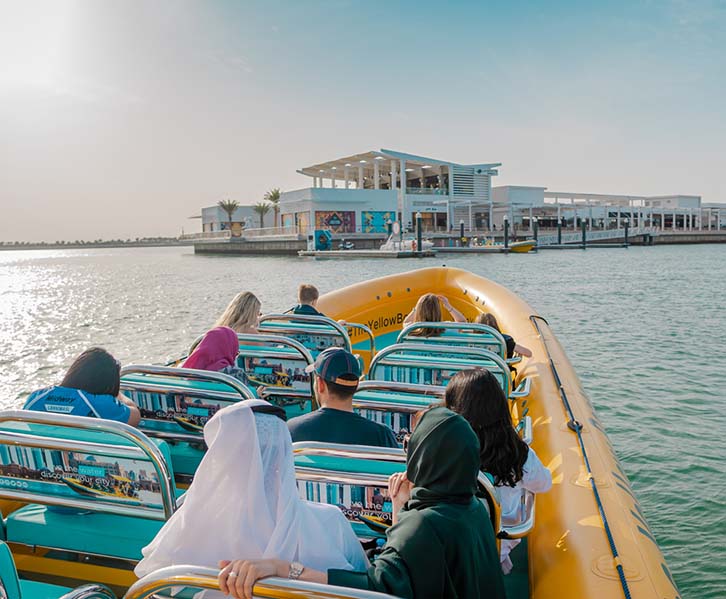
One of the best activities in Singapore is taking a traditional boat tour around Marina Bay. It’s a great first stop as it helps you get your bearings and offers views of some of the city center’s most iconic sights. Purchase tickets at the pier near Merlion Park and hop on board. Alternatively, you can book a Singapore walking tour and river cruise here.
ArtScience Museum
The lotus-shaped architecture of the ArtScience Museum is a common sight in the Marina Bay area. However, it’s worth exploring inside as well. The museum focuses on the intersection of science and art and features a diverse range of temporary exhibitions. Think interactive art installations, moving light installations, and sensory-engaging works. When I visited, there was even a street art exhibition, with a Marvel Cinematic Universe exhibit coming up soon.
Gardens by the Bay
A trip to Singapore wouldn’t be complete without visiting the renowned Gardens by the Bay. This isn’t your typical garden center. Instead, it’s a massive project spanning 101 hectares of reclaimed land, featuring the most incredible and imaginative garden and horticultural designs you can imagine.
Most of the main areas are free to enter, and you can also watch the nightly light show for free. Plan to visit in the late afternoon to evening so you can catch this performance, as it’s definitely one of the top things to do in Singapore. Every evening, the massive “Supertree Grove” in the garden’s center puts on a dazzling light show synchronized with music – it’s a breathtaking sight! Arrive about fifteen minutes early, secure a spot on the grass near the trees, and then lay back and enjoy the show.
Entry to the two observatories at Gardens by the Bay does require a fee, but they are well worth it . The Flower Dome boasts a Mediterranean and tropical climate, with a continually changing schedule of floral displays. But for me, the most spectacular is the Cloud Forest. The focal point under the dome is a towering mountain, covered in lush greenery with winding pathways. A 35-meter waterfall cascades down from one side, creating a misty spectacle.
Exploring the Different Regions of Singapore
While Singapore may be synonymous with modernity and incredible architecture, it doesn’t mean that the country has forgotten its roots. Singapore was once part of Malaysia and is a very young nation with a rich multicultural population thanks to its long history as a trading port.
On the second day of my three-day Singapore itinerary, I decided to explore some of the cultural districts to learn about the country’s history and traditions. Singapore is home to several ethnic groups, some of which, such as the Chinese and Indians, have left a profound impact. Like in other major cities, Singapore’s ethnic communities tend to gather together, resulting in several cultural districts that feel distinctly different from the rest of the city.
Little India
Little India is a vibrant, bustling, and deliciously chaotic neighborhood that feels like a concentrated (and much calmer) version of the real thing. It’s one of the most visually appealing places in Singapore, and in my opinion, an absolute must-visit.
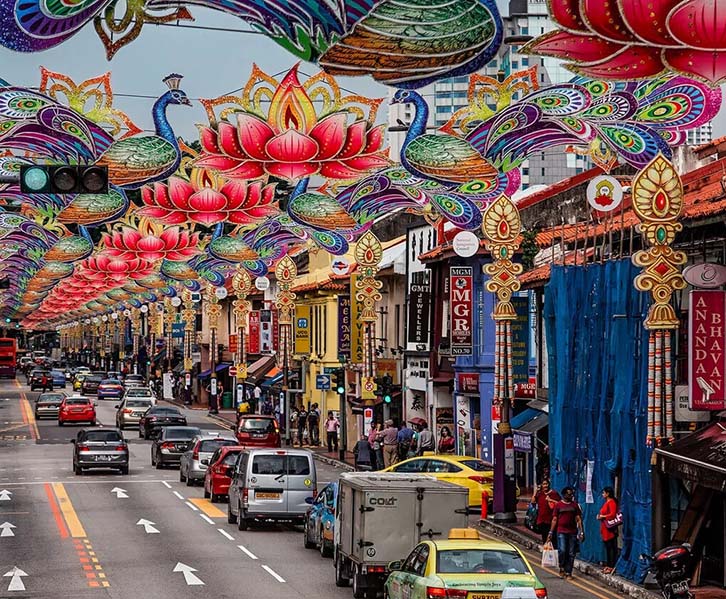
Immerse yourself in the vitality of the area; browse through the sari shops, explore the markets, and seek out the spectacular street art murals around Little India. Don’t miss the various Buddhist and Hindu temples that dot the area, with Sri Veeramakaliamman Temple and the Sri Srinivasa Perumal Temple being two of the most popular. The colorful House of Tan Teng Niah is another must-visit in Singapore. This building is a Chinese colonial-style terrace house that has been reclaimed by the Little India community and painted in rainbow colors. It’s an Instagrammer’s dream and a symbol of the neighborhood, so be sure not to miss it.
Lastly – when visiting Little India, you absolutely must indulge in some food! There are dozens of fantastic restaurants around, but for a budget-friendly and adventurous experience, head to the street food stalls at Tekka Market (more details on this later).
Where is Little India: Serangoon Road and nearby streets. Just take the subway to Little India Station!
Chinatown
Next up is Singapore’s Chinatown. With the majority of Singapore’s population being of Chinese descent, it’s no surprise that Chinatown is quite a substantial community. It’s a place where Singapore’s ancient traditions continue, and it’s a captivating area.
Similarly, the area is home to some beautiful and historically significant temples. Mariamman Hindu Temple is Singapore’s oldest sacred site, while the impressive four-story Buddha Tooth Relic Temple is one of the newest, built in 2002, housing the sacred Buddha tooth relic.
Chinatown is renowned as an excellent place for shopping and bargaining. Head to the highly popular Chinatown Street Market to purchase a wide range of items, from tacky souvenirs to exquisite handicrafts and antiques. If you’re looking for cartoon character chopstick holders or a set of paper lanterns, this is your best bet… but you’ll also discover some beautiful clothing and plenty of interesting handmade products.
This is also a highly popular food and nightlife district. In addition to restaurants that cater to various budgets, you can head to Maxwell Hawker Centre to savor authentic Singaporean dishes or visit the Chinatown Food Street (yes, that’s its name) for inexpensive, authentic eats.
Where to find Chinatown: The easiest way is to take the subway to Chinatown Station, which is right near the street market.
Kampong Glam
Kampong Glam is the last on the list and one of the most popular and famous areas in Singapore. As the home of Muslim Malays, Kampong Glam once again offers a completely different feel and is a fresh side of the city. Nowadays, it’s also quite trendy with street art everywhere, stylish cafes, and boutique shops all around. The atmosphere here is very cool, and the neighborhood is full of vitality.
To delve deeper into the history and culture of the area, visit the magnificent Sultan Mosque. It’s the largest mosque in the city with a shimmering golden dome on top. You might also want to explore the Malay Heritage Centre for more insights and pay a visit to the traditional Malay palace.
Malay and Middle Eastern cuisine is a staple in Kampong Glam, so you can spend some time enjoying a meal at one or two of the area’s restaurants or unwind with a hookah after dinner. For a taste of modern culture, head over to Haji Lane, where you’ll find quirky boutique shops, bars, and plenty of street art.
Location of Kampong Glam: Kampong Glam, centered around Sultan Mosque, Haji Lane, and the surrounding streets, is home to many of the best bars and shops. The nearest subway station is Bugis.
Pulau Ubin
After a day or two of marveling at the impressive architecture and immersing yourself in the culture and history of this country, it’s time to explore the other side of my Singapore 3-day itinerary. Just a short ten-minute ferry ride away is Pulau Ubin, a small island not far from the city’s coastline. You can still catch glimpses of the city skyline with its glittering skyscrapers, but this jungle-covered island feels like a world away.

Life here has a completely different pace, from the ferry schedule with no fixed timetable (they depart as soon as there are 12 passengers, and that’s it) to the sleepy village that greets you when you disembark – a world away from the super-modern city center you just left.
The best way to explore the island is by bicycle, and there are plenty of shops in the village where you can rent bikes at a fairly low cost. Hop on a bike and follow the signs around the island. You’ll pass by several abandoned quarries, now filled with crystal blue waters, home to various wildlife; we spotted what could have been baby crocodiles or large monitor lizards (hard to tell from a distance).
If you want to get close to nature, head to Chek Jawa Wetlands, which is a star attraction on the island. There’s a long boardwalk that winds through the nature reserve, cutting through mangroves and extending out into the wetlands. You can spot crabs in the mud and might even catch a glimpse of the Asian small-clawed otters that prey on them. Climb up the Jejawi Tower for views of the lush green landscape. Keep an eye out for local birdlife, including kingfishers and white-bellied sea eagles.
How to get to Ubin Island
Ferries to Ubin Island depart from Changi Point Ferry Terminal. If you’re taking public transportation, you can take the subway to Tanah Merah MRT station, then take bus number 2 to Changi Bus Interchange, and it’s just a 3-minute walk from there to the ferry terminal.
Street food, markets, and budget-friendly eats
Little India Tekka Market
One of the best places in Singapore to find cheap and authentic Indian cuisine is the Tekka Centre Market in Little India. Next to the traditional food market is a food court filled with stalls.
Satay Street
Singapore’s cuisine is heavily influenced by its neighboring countries, so it’s no surprise that the popular Indonesian dish Satay is widely available. Don’t miss trying the simple yet delicious street food of charcoal-grilled meat skewers with peanut sauce. Head to Boon Tat Street in the evening to find the best. This street is nicknamed “Satay Street,” and every evening it’s closed to traffic and filled with dozens of Satay stalls. The atmosphere is fantastic, and the food is even better!
